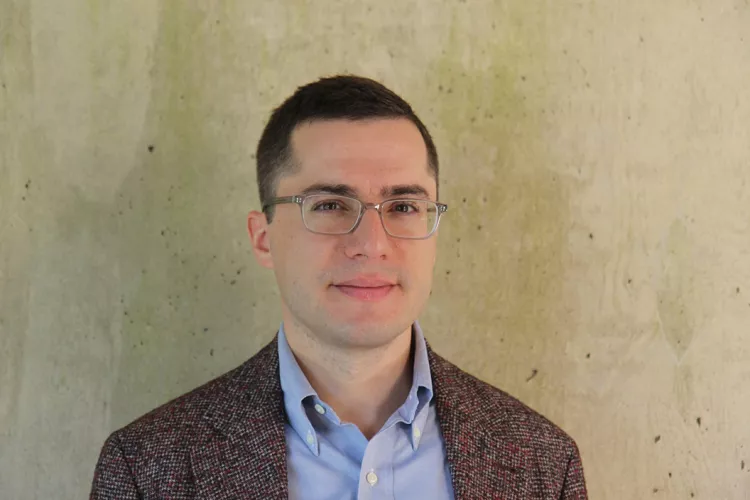Brian Goldstein Receives Senior Fellowship with National Gallery of Art

Associate Professor of Art History Brian Goldstein received a senior fellowship with the Center for the Advanced Studies in the Visual Arts at the National Gallery of Art.
The fellowship — one of the most prestigious in the field of art history — will take Goldstein to Washington, D.C. in the 2023-2024 academic year to conduct full-time research. He will build upon his examination of the life and work of Max Bond, the foremost African American architect of the late twentieth century.
Senior fellows also have access to the notable resources represented by the art collections, the library, and the image collections of the National Gallery of Art, as well as to the Library of Congress and other specialized research libraries and collections in the D.C. area.
Goldstein is the lone recipient this year of the Paul Mellon Senior Fellowship, and joins the four to six recipients of the Alisa Mellon Bruce Senior Fellowship. The fellowships are designed to support research in the history, theory, and criticism of the visual arts.
Goldstein, an urban and architectural historian, discussed his reaction to that honor, what he hopes to take from it, and how it connects to his work at Swarthmore.
In what way was winning this fellowship meaningful to you?
Fellowships at the Center for Advanced Study in the Visual Arts are well known among art and architectural historians — it's long been one of the most exciting places for research in these fields and has a reputation as a supportive place to research and write. It's also a beautiful place, in the East Building of the National Gallery of Art in Washington, D.C. I've done research in the library there and have watched the Center's dean, Steven Nelson, encourage a wide array of scholarship since his arrival there, especially research that engages overlooked or marginalized histories, like my own. The fellowship was on my radar as a possibility, but I knew many wonderful people would apply. When I found out I had received it, I was first excited, then a bit existentially shocked to realize that I am now a "senior" fellow. I don't feel very senior!
What are your writing and research plans for the next year?
I will be finishing the manuscript of my ongoing book, currently titled If Architecture Were for People: The Life and Work of J. Max Bond, Jr. I use Bond's story to tell a larger history about the opportunities and constraints faced by Black architects — long a small minority in the field — and to understand Bond's career-long effort to shape architecture as a tool in the struggle for racial justice. Bond's story represents a history of socially engaged architecture that was sidelined as the field became preoccupied with form and aesthetics, but his vision of how to build a more just world is especially resonant with the current era's own civil rights struggles.
My intention is to write, write, and write some more (with a few research trips along the way, especially to New York). I have completed about half of a manuscript draft and intend to complete a draft during the time of my fellowship and in the summer months before and after.
In what ways does the fellowship connect to your work at Swarthmore?
My teaching at Swarthmore engages the history of architecture, especially the history of modern architecture in the long twentieth century, with a focus on the social, cultural, and political histories of the built environment. While I teach courses that engage race directly — like "Race, Space, and Architecture" and "Building New Worlds: The Arts and Architectures of Liberation," taught with Assistant Professor of Art History Paloma Checa-Gismero — I also work to weave discussions of identity, power, and social movements throughout all of my courses.
This has long been an interest of mine, represented by the goal of my first book, and is at the center of this one, too. The writing of this book draws from what I have learned in my teaching and builds on my ongoing research interests, which Swarthmore has always supported generously. I look forward to continuing to explore these fields after my research leave, to teaching the Swarthmore community through this project, and to bringing it to the broader fields of architectural and urban history.
Any other thoughts on the opportunity?
I'm very lucky to have a year of research leave and look forward to making a lot of this time. I'm honored and proud to have a senior fellowship at the Center for Advanced Studies in the Visual Arts and excited for the chance it will allow me to share Max Bond's important story with the world. I hope my research will ensure that his transformative career receives the attention it deserves in the history of architecture. My last research leave (2019-20) was unexpectedly interrupted by the pandemic, so I am hoping for a less tumultuous year this time around! I am grateful to have the support of students and colleagues who all make the next 15 months of research leave possible in different ways.



